10 powerful examples of historic preservation in action
May 24, 2024 · Culture & History, Develop, Live, Visit, Why Birmingham

It’s easy to take for granted the historic gems we have here in Birmingham. Many beautiful, story-filled buildings dot the map of our city, their silhouettes adorning our skylines and their façades serving as the vibrant background to our everyday lives downtown. However, without attention, investment and a commitment by our community to prioritize these treasures, our historic buildings and the authentic character they give our city can disappear. REV is always advocating for historic preservation and adaptive reuse, and we are continuing our historic preservation month series with a look at when Birmingham has done that really well.
Important to note: The authentic character of Birmingham is made up of many historic buildings, large and small, that contribute to that character. Together, they all add up to a fabric that imbues cultural and economic value to our city. It is not just history that matters, but economic impact as well. Consider this comment sent to REV Birmingham’s CEO David Fleming after someone visited our city and was taken by our historic building fabric: “It occurs to me that Birmingham really needs to sell itself as not just a critical site of the Civil Rights Movement but also as an amazing open open-air museum of [historic] buildings. I can’t walk a block without seeing some amazing piece of architecture!” This visitor recognizes the value of what we have here.
Although this is far from a comprehensive list, we invite you to keep reading and learn more about ten powerful examples of historic preservation already in action in the Magic City – specifically, historic places where we dine, live, work, play and stay – and we invite you to support the businesses within. Not only does your support benefit the local economy, but it also has the power to attract additional investment, helping to bring even more prosperity and development to Birmingham.
Where we dine: The Pizitz Food Hall
Did you know that Birmingham’s downtown retail district boasted the largest department store south of the Ohio River when the Pizitz building was completed in 1925? Russian immigrant Louis Pizitz moved to Birmingham around 1906, and he had big dreams to be the premier retailer in town. Pizitz would indeed become admired as a successful businessman when he opened his 74-department store on 2nd Avenue North, the flagship location of his chain of department stores. By the late 1980s, though, major retail had largely moved to suburban malls, and Pizitz closed their doors.
After years of vacancy, developers worked to build the challenging financial capital stack needed to bring this beautiful building back to life in 2017. The Pizitz now serves as a dining hall (and residential building). The ground floor houses various food stalls serving up different cuisines, as well as a snazzy bar, The Louis, offering more than 12 twelve beers on tap, a large wine selection, and specialty cocktails to sip on. The mezzanine level is home to Forge co-working space, whose interior windows overlook the bustling food hall, and the building’s basement is home base for indie movie theater Sidewalk Cinema. A favorite amongst locals, The Pizitz is the perfect spot for a quick bite, some drinks, a movie or just to gather with good company.

HONORABLE MENTION
The Webb Building! In 2023, it was announced that new late-night bar and restaurant concept Salud Taqueria would be making its way to one of the oldest surviving buildings in downtown Birmingham – and we can’t wait for the modern eatery to re-open this historic building’s doors! Throughout its history, the 1871-born structure has housed barbershops, cigar shops, clothing stores, restaurants and even an old-fashioned saloon.
Also worth noting is that all along the Morris, 1st Avenue and 2nd Avenue North corridor are many of our favorite restaurants and bars – all nestled in historic buildings with their own unique stories! We’ll delve deeper into those tales another time.
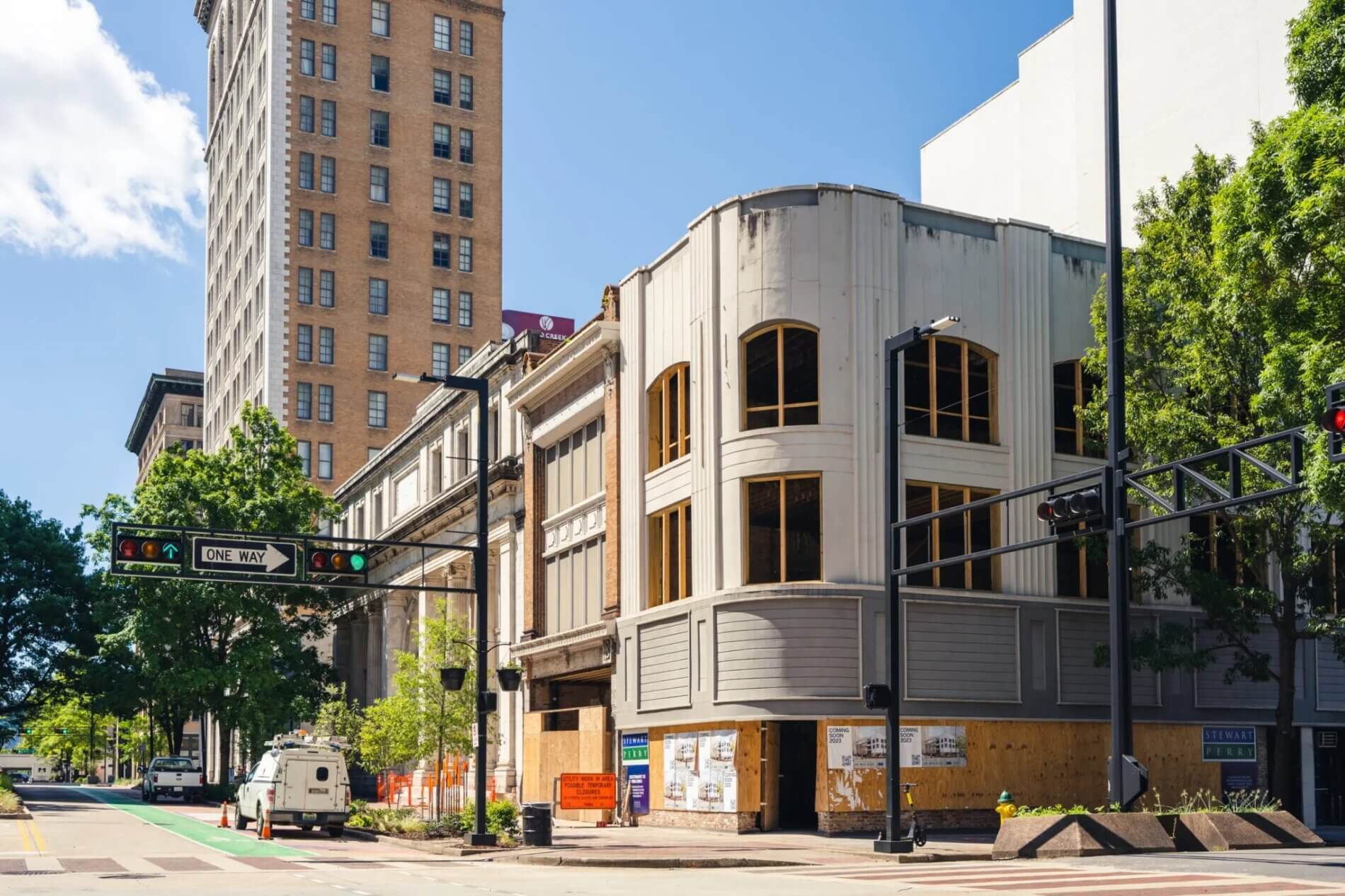
Where we live: The Frank Nelson Building
Can we be frank with you? This next building is the epitome of stylish city living.
Affectionately dubbed “The Frank,” one of Birmingham’s original skyscrapers on 20th Street North was given new life when it was converted to a chic residential hub. Of its 10 stories, nine are dedicated to its residents, with the ground floor housing retail tenants like popular Italian restaurant Trattoria ZaZa. The building also boasts a rooftop club room/deck, and the views don’t disappoint.
But what purpose did the space originally serve? Constructed in 1903, it was the headquarters for the First National Bank of Birmingham. The building was designed by William Weston with Charles Wheelock & Sons and cost about $700,000 to build. Later down the line, The Frank housed The Birmingham School of Law for 16 years.
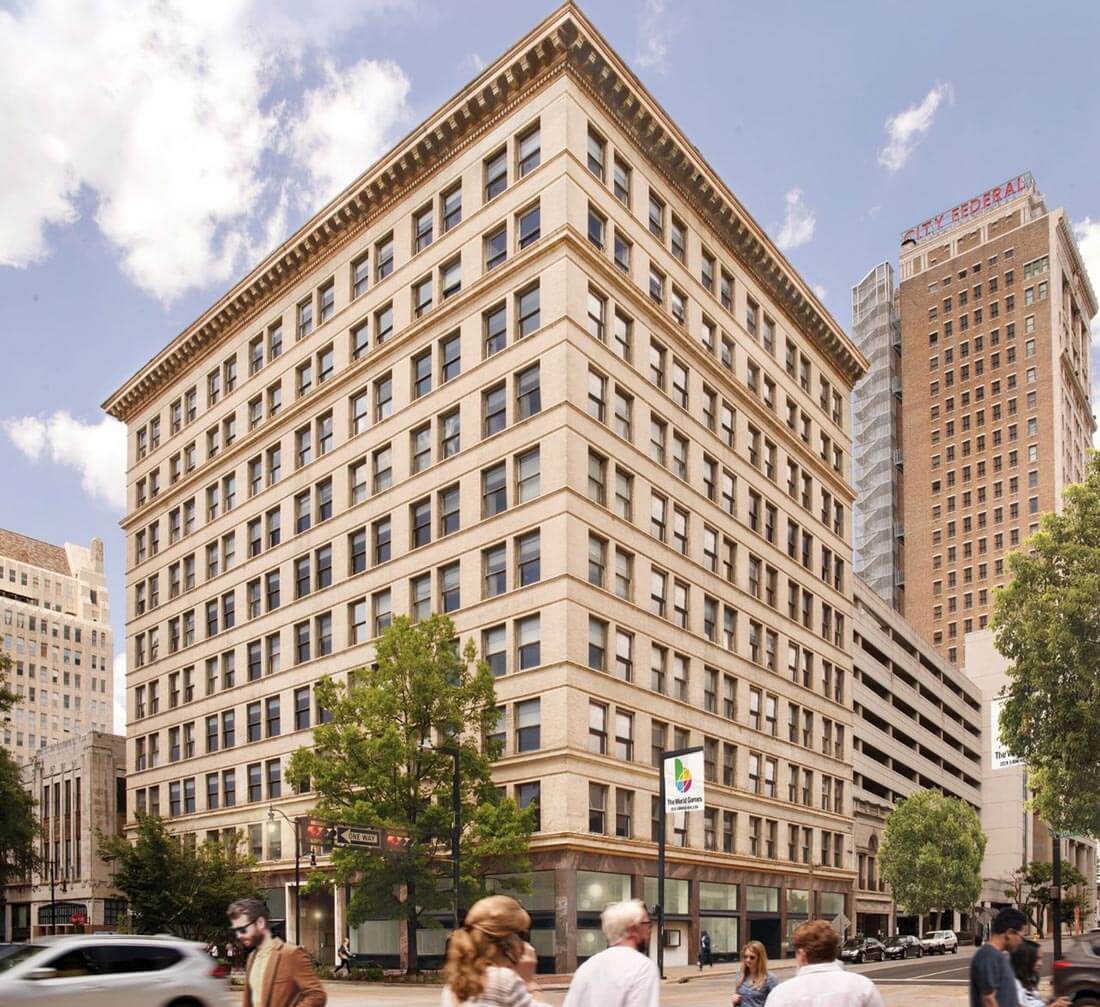
Where we work: Nextec
While the Magic City has its fair share of fun and games to enjoy, there’s no shortage of hard work being carried out either. Enter: Nextec. This redevelopment project is in the heart of The Switch district, on the corner of 3rd Avenue and 16th Street North. The 90-year-old, 65,000-square-foot building was previously home to Edwards Motor Company (1928-1944), Railroad Furniture Co. (1979) and Sticks ‘N’ Stuff (2007).
Today, it stands proud as a completed and fully leased project, including communal areas and flexible workspaces, as well as a pocket park. Thanks in part to Alabama Historic Tax Credits, Federal Historic Tax Credits, New Market Tax Credits and a grant from the City of Birmingham, the historical value of the building was saved and repurposed, with nods to its past as Edwards Chevrolet found throughout its halls in the form of memorabilia provided by descendent Lee Edwards.

Where we play: The Florentine
Often touted as the most beautiful building in Birmingham, The Florentine has served as a stunning setting for many a downtown soiree. This special venue has roots in the 1920s, when Henry Upson Sims and architect David O. Whilldin designed and constructed the building for the Club Florentine.
The story goes that the structure was built in honor of Sims’ beloved teacher, Hannah Elliott, who took his class on a tour of Italy – and that inspiration is evident in its features. The exterior is highly decorated, with colored terra-cotta ornament framing two arcades supported by marble columns. And to top it off? A short red-tile roof that could have been plucked right from its boot-shaped homeland. At the time it was said to have been the most costly building constructed in Birmingham (by square foot).
Over the years, The Florentine has served a number of tenants, all the while retaining its charm and status as a City Center staple. After undergoing a multi-million-dollar renovation in 2014, this historic landmark was restored to an even more splendid version of itself.
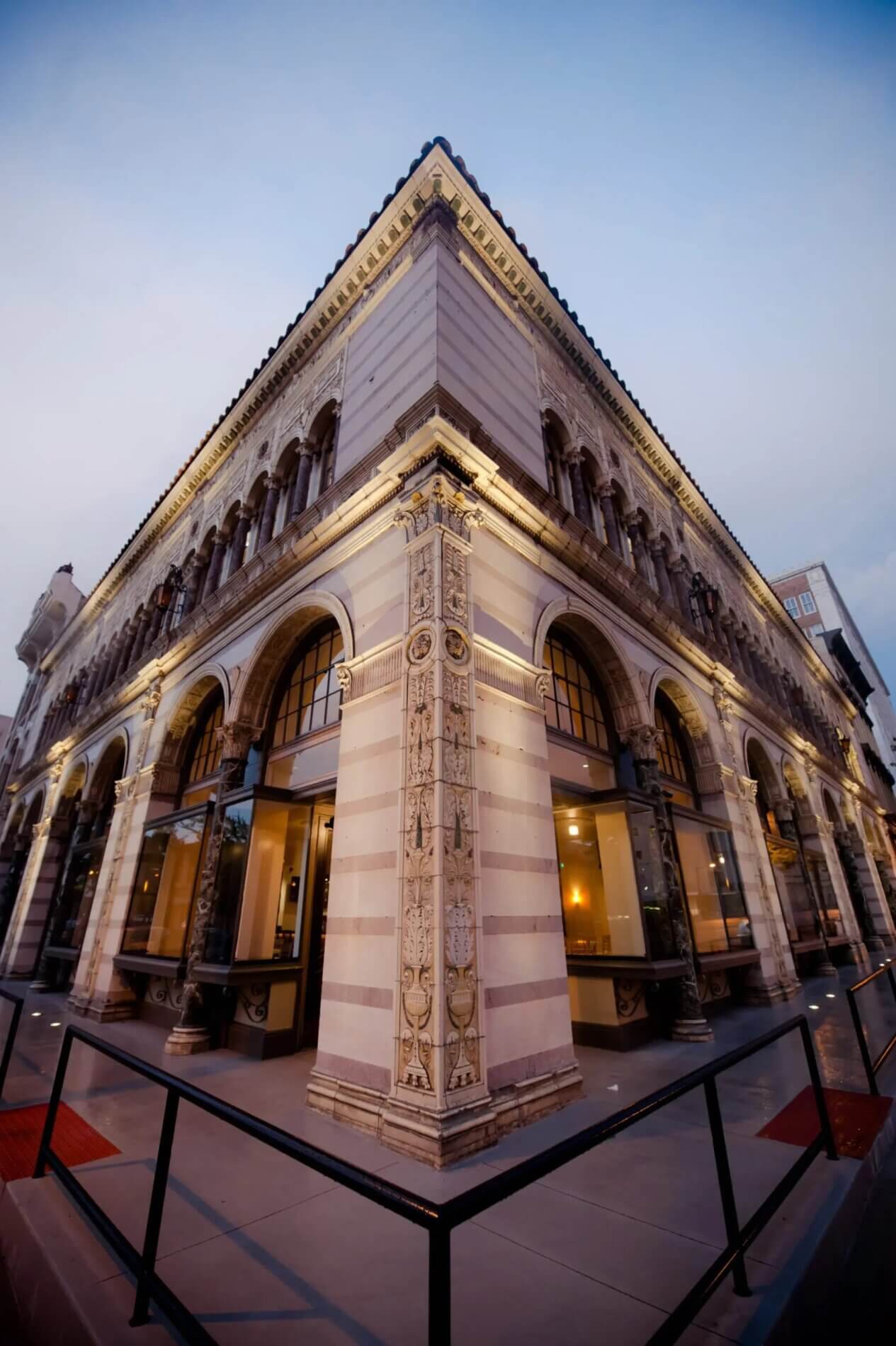
HONORABLE MENTIONS
The Alabama and Lyric Theatres! We’d be remiss not to give these two iconic (and historic) venues their flowers. We enjoy these treasures today thanks to the tireless efforts of volunteers who began working back in the 1980s to save the Alabama and then Lyric from destruction. It was not inevitable, and we have the heroes from Birmingham Landmarks to thank. From noteworthy live performances to seasonal events like the Sidewalk Film Festival and holiday film screenings, these spaces have become staples for downtown residents and visitors alike – and there are few Birminghamians that haven’t strolled through their ornate interiors for a special outing.

Where we stay: The Elyton and The Kelly
What has 16 stories, is 247 feet tall and was constructed in 1909? If you said the Empire Building, you’d be right! When it was built, it was the tallest building in Alabama and celebrated as a symbol of Birmingham’s golden era. Rising from the corner of 1st Avenue and 20th Street North, it was one of four buildings built at the intersection that were so large the corner became known as the “Heaviest Corner on Earth.” Nowadays, the site is home to The Elyton, where visitors passing through Birmingham (or locals enjoying a relaxing staycation) can rest their heads.
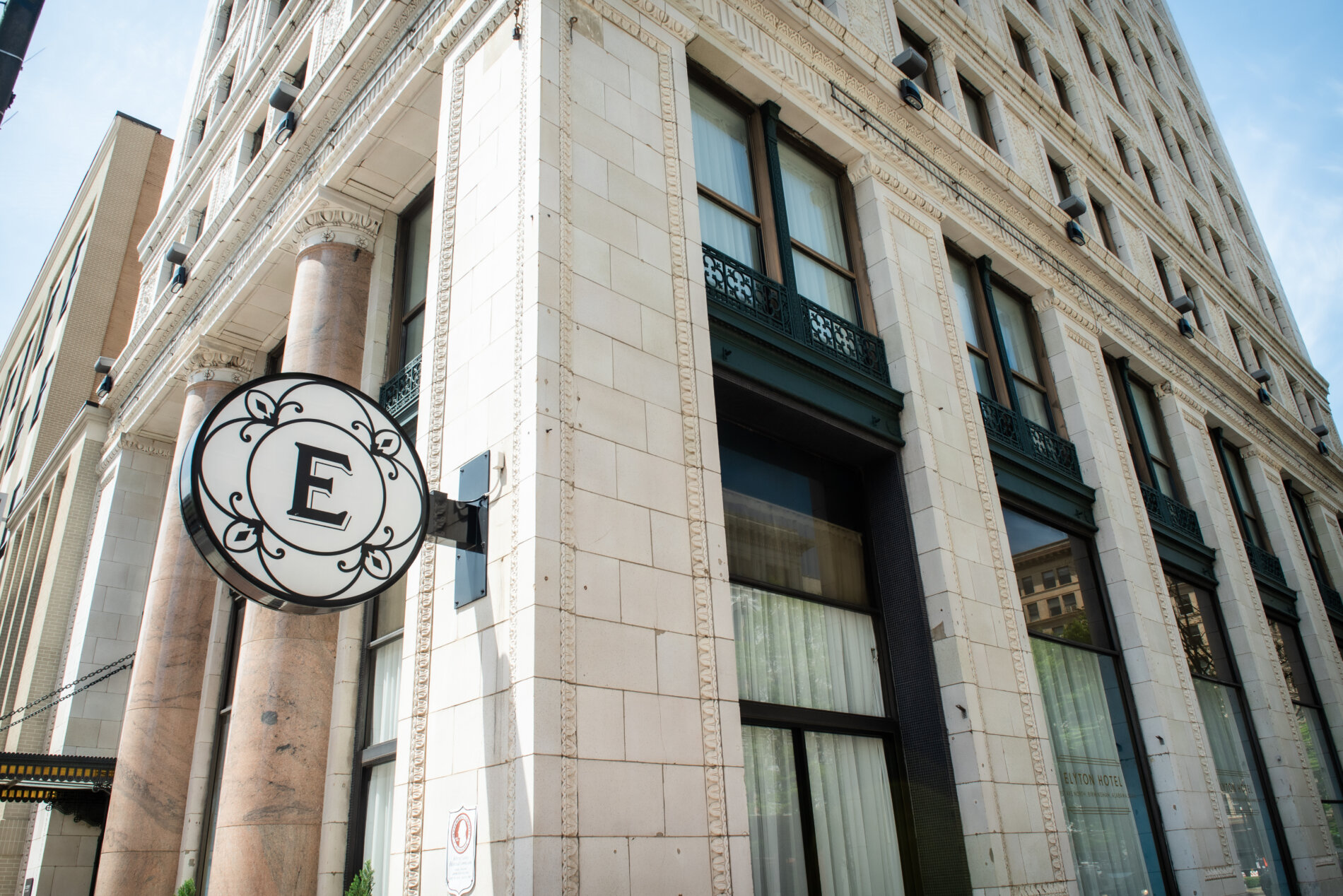
When it comes to historic hotels, The Elyton is in good company here in the Magic City! The Kelly is another recently restored favorite among residents and out-of-towners.
Originally constructed in 1902 as the three-story headquarters to the Birmingham Ledger newspaper, the property changed hands in 1928 with a purchase from Protective Life. The insurance company then hired architectural firm Warren, Knight & Davis (which had a huge impact on Birmingham’s historic skyline!) to sprinkle some Art Deco magic on the project, transforming it into a landmark that still catches eyes today. One might consider the structure’s most notable feature to be its skyline-defining, copper-green rooftop, but there is a plethora of restored architectural touches to be on the lookout for – right down to its vintage elevator dials. Fun fact: This hotel is located right next to Richard Arrington Jr. Boulevard’s Rainbow Viaduct, one of Birmingham’s oldest bridges.
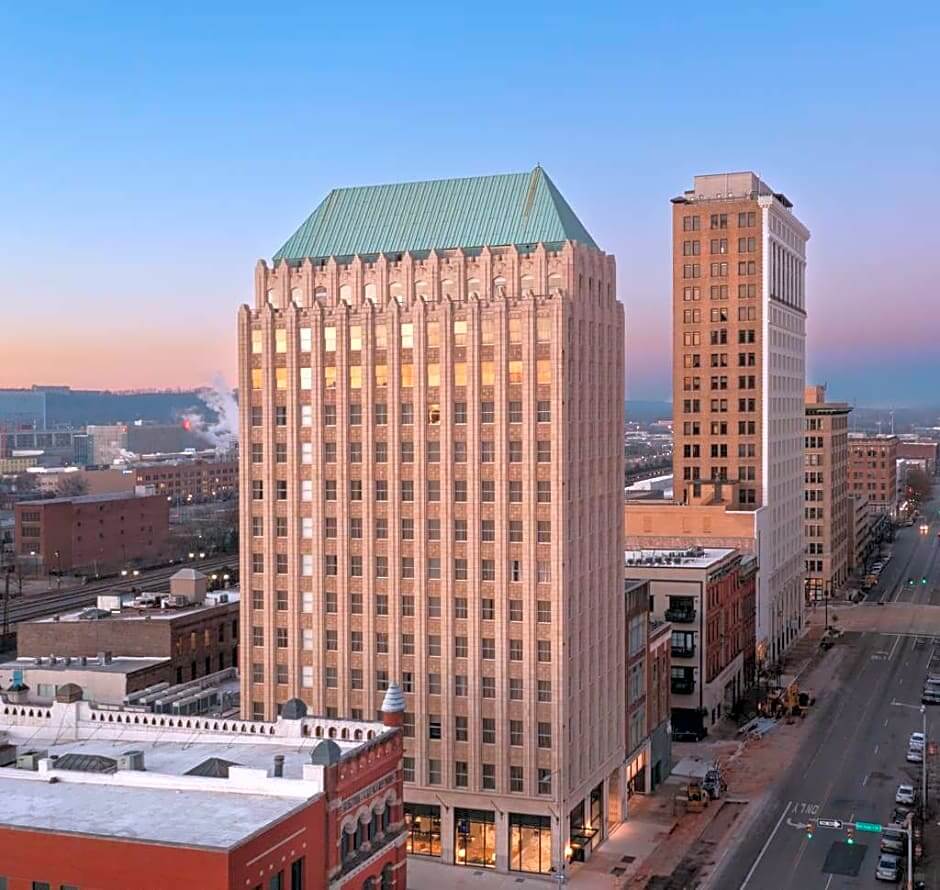
HONORABLE MENTION
Brown Marx Tower! While the project is not yet complete, this well-known landmark is set to join the ranks of historic Birmingham buildings-turned-hotels in the near future.
Read More
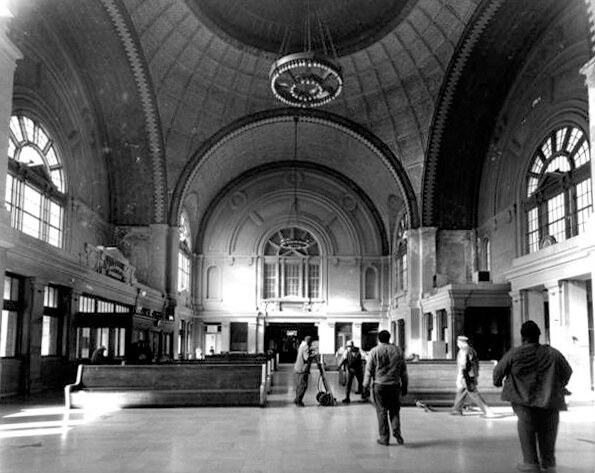
A cautionary tale: Birmingham’s historic losses
In case you haven’t heard, May is National Historic Preservation Month, as so celebrated for years by the National Trust for Historic Preservation and the National Park Service. Here in Birmingham, a city rich in history and culture, this month-long celebration is not only a reminder to take stock of the historic treasures and charm we currently possess, but a time to mourn those we no longer have.

Main Street Now shines a spotlight on the Magic City
You may notice some new faces exploring downtown Birmingham early next week. Nearly 1,900 leaders in commercial district revitalization from across the country will convene from May 6-8 for the 2024 Main Street Now Conference.